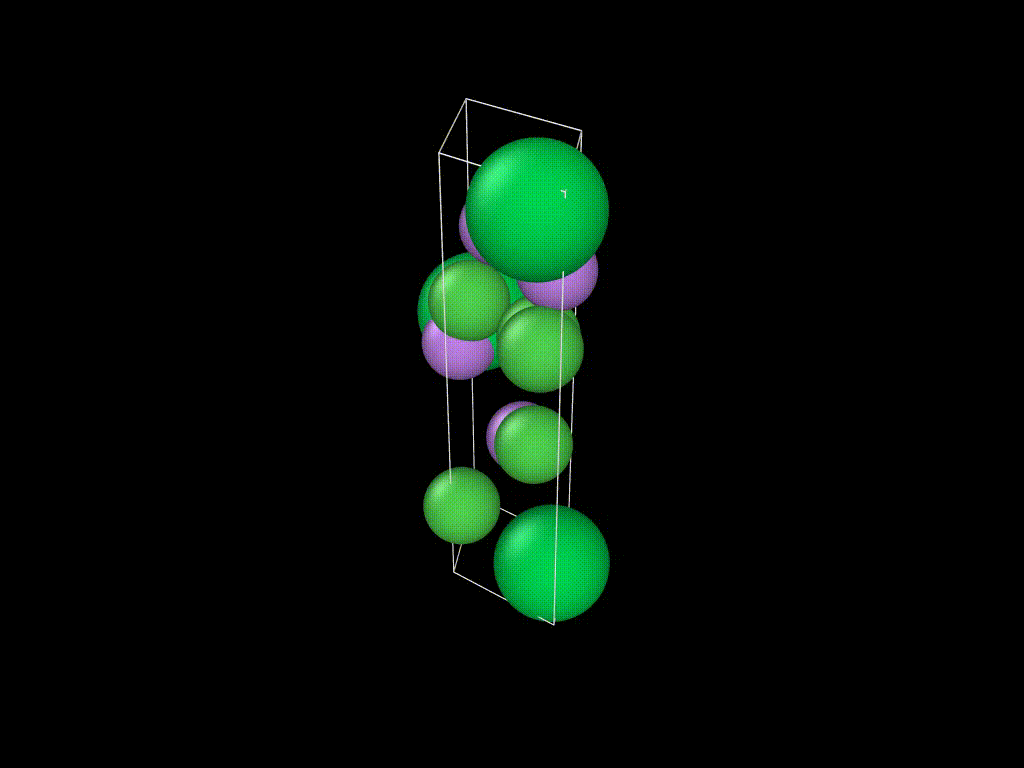This software implementes Crystal Diffusion Variational AutoEncoder (CDVAE), which generates the periodic structure of materials.
It has several main functionalities:
- Generate novel, stable materials by learning from a dataset containing existing material structures.
- Generate materials by optimizing a specific property in the latent space, i.e. inverse design.
- Installation
- Datasets
- Training CDVAE
- Generating materials
- Evaluating model
- Authors and acknowledgements
- Citation
- Contact
The easiest way to install prerequisites is via conda.
Run the following command to install the environment:
conda env create -f env.ymlActivate the conda environment with conda activate cdvae.
Install this package with pip install -e ..
We've noticed that the above command to install the dependencies from env.yml can take very long. A faster way to install the required packages is:
conda env create -f env_sub.yml
conda activate cdvae
conda install ipywidgets jupyterlab matplotlib pylint
conda install -c conda-forge matminer=0.7.3 nglview pymatgen=2020.12.31
# Downgrade to fix a known issue with pytorch
python3 -m pip install setuptools==59.5.0
pip install -e .conda env create -f env.cpu.yml
conda activate cdvae
pip install -e .Make a copy of the .env.template file and rename it to .env. Modify the following environment variables in .env.
PROJECT_ROOT: path to the folder that contains this repoHYDRA_JOBS: path to a folder to store hydra outputsWABDB: path to a folder to store wabdb outputs
All datasets are directly available on data/ with train/valication/test splits. You don't need to download them again. If you use these datasets, please consider to cite the original papers from which we curate these datasets.
Find more about these datasets by going to our Datasets page.
To train a CDVAE, run the following command:
python cdvae/run.py data=perov expname=perov
To use other datasets, use data=carbon and data=mp_20 instead. CDVAE uses hydra to configure hyperparameters, and users can modify them with the command line or configure files in conf/ folder.
After training, model checkpoints can be found in $HYDRA_JOBS/singlerun/YYYY-MM-DD/expname.
Users can also additionally train an MLP property predictor on the latent space, which is needed for the property optimization task:
python cdvae/run.py data=perov expname=perov model.predict_property=True
The name of the predicted propery is defined in data.prop, as in conf/data/perov.yaml for Perov-5.
To generate materials, run the following command:
python scripts/evaluate.py --model_path MODEL_PATH --tasks recon gen opt
MODEL_PATH will be the path to the trained model. Users can choose one or several of the 3 tasks:
recon: reconstruction, reconstructs all materials in the test data. Outputs can be found ineval_recon.ptlgen: generate new material structures by sampling from the latent space. Outputs can be found ineval_gen.pt.opt: generate new material strucutre by minimizing the trained property in the latent space (requiresmodel.predict_property=True). Outputs can be found ineval_opt.pt.
eval_recon.pt, eval_gen.pt, eval_opt.pt are pytorch pickles files containing multiple tensors that describes the structures of M materials batched together. Each material can have different number of atoms, and we assume there are in total N atoms. num_evals denote the number of Langevin dynamics we perform for each material.
frac_coords: fractional coordinates of each atom, shape(num_evals, N, 3)atom_types: atomic number of each atom, shape(num_evals, N)lengths: the lengths of the lattice, shape(num_evals, M, 3)angles: the angles of the lattice, shape(num_evals, M, 3)num_atoms: the number of atoms in each material, shape(num_evals, M)
To compute evaluation metrics, run the following command:
python scripts/compute_metrics.py --root_path MODEL_PATH --tasks recon gen opt
MODEL_PATH will be the path to the trained model. All evaluation metrics will be saved in eval_metrics.json.
The software is primary written by Tian Xie, with signficant contributions from Xiang Fu.
The GNN codebase and many utility functions are adapted from the ocp-models by the Open Catalyst Project. Especially, the GNN implementations of DimeNet++ and GemNet are used.
The main structure of the codebase is built from NN Template.
For the datasets, Perov-5 is curated from Perovksite water-splitting, Carbon-24 is curated from AIRSS data for carbon at 10GPa, MP-20 is curated from Materials Project.
Please consider citing the following paper if you find our code & data useful.
@article{xie2021crystal,
title={Crystal Diffusion Variational Autoencoder for Periodic Material Generation},
author={Xie, Tian and Fu, Xiang and Ganea, Octavian-Eugen and Barzilay, Regina and Jaakkola, Tommi},
journal={arXiv preprint arXiv:2110.06197},
year={2021}
}
Please leave an issue or reach out to Tian Xie (txie AT csail DOT mit DOT edu) if you have any questions.

